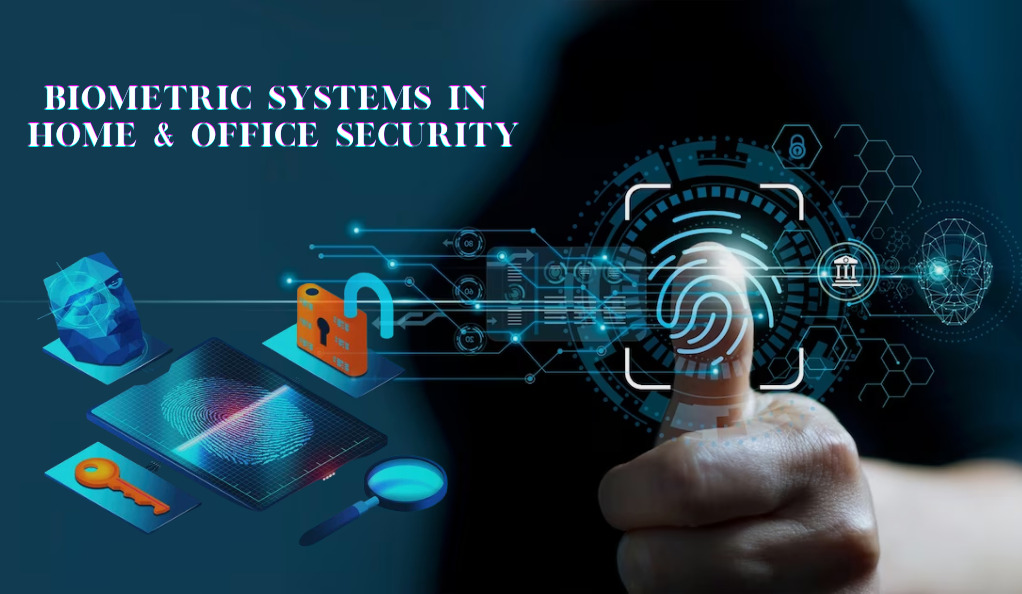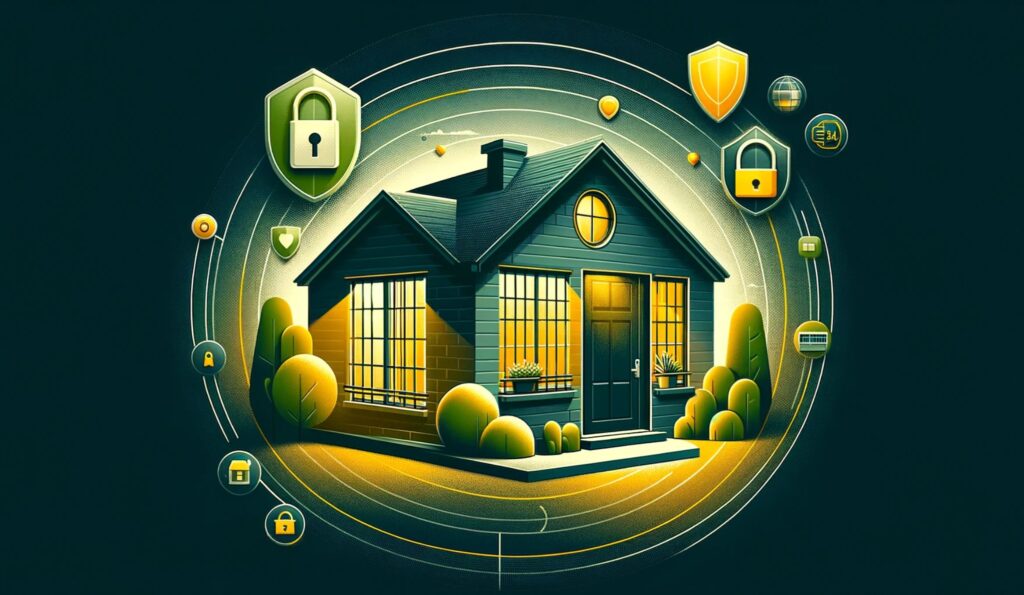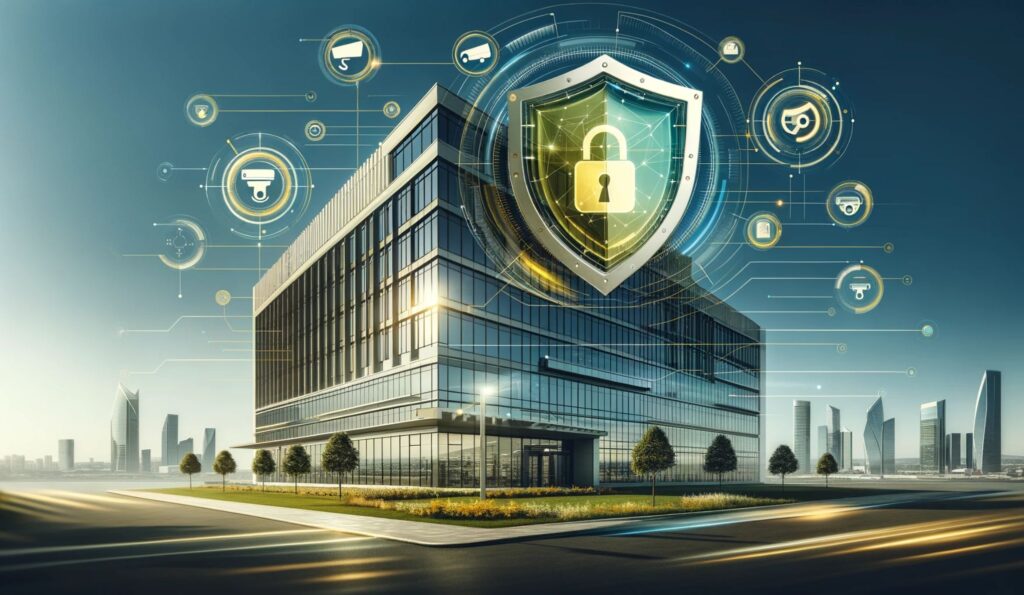In the annals of security, the quest for a foolproof system has been a constant endeavor. From the rudimentary locks and keys of ancient civilizations to the digital passwords of the late 20th century, the evolution of security mechanisms has mirrored technological advancements. Yet, as technology has progressed, so too have the methods of those seeking unauthorized access. This perpetual game of cat and mouse has necessitated the development of more sophisticated, personalized, and harder-to-breach security solutions. Enter the era of biometric systems.
Traditional Security Systems: A Brief Overview
Historically, security systems have been largely mechanical or, in more recent times, electronic. Consider the classic deadbolt lock. Its mechanism, though simple, provided a tangible barrier to entry. As technology evolved, electronic systems like alarm systems, CCTV cameras, and magnetic card readers became the norm, especially in commercial settings.
| Security System | Era | Primary Use | Vulnerabilities |
|---|---|---|---|
| Deadbolt Locks | Ancient | Homes | Picking, Breaking |
| Alarm Systems | 20th Century | Homes, Offices | Tampering, False Alarms |
| CCTV Cameras | Late 20th Century | Public Areas, Offices | Blind Spots, Tampering |
| Magnetic Card Readers | Late 20th Century | Offices | Cloning, Theft |
However, these systems, while effective to a degree, had their limitations. Keys could be lost or duplicated, passwords forgotten or hacked, and electronic cards cloned or stolen. The need for a more personalized, intrinsic security measure became evident.
The Shift Towards Biometric Security Solutions
Biometrics, derived from the Greek words ‘bio’ (life) and ‘metric’ (measure), refers to the unique physical or behavioral characteristics of an individual. Unlike keys or passwords, these characteristics are inherently tied to the individual, making them an ideal candidate for security authentication.
The allure of biometrics isn’t just in its uniqueness but also in its convenience. Imagine a world where you don’t need to remember a complex password or carry a bunch of keys. Your face, fingerprint, or even the pattern of your iris becomes the key. This seamless integration of personal identity with security mechanisms is what has propelled the rapid adoption of biometric systems in both homes and offices.

Understanding Biometrics
The term ‘biometrics’ might sound futuristic, but its roots are deeply embedded in the natural world. At its core, biometrics revolves around the unique physiological and behavioral traits that differentiate one individual from another. These traits, unlike passwords or ID cards, are nearly impossible to replicate or forge, making them a formidable tool in the realm of security.
Defining Biometrics
Biometrics can be broadly categorized into two types: physiological and behavioral.
- Physiological Biometrics: These are related to the physical characteristics of an individual. Examples include fingerprints, facial features, and the iris or retina of the eye.
- Behavioral Biometrics: These pertain to the unique ways in which individuals act, such as their signature style, voice, or even the way they type on a keyboard.
| Type | Examples | Usage in Security | Advantages |
|---|---|---|---|
| Physiological | Fingerprint, Face, Iris | Unlocking devices, Access control | Hard to forge, Stable over time |
| Behavioral | Voice, Keystroke dynamics, Signature | Voice-activated systems, Fraud detection | Difficult to mimic, Continuous authentication |
Diverse Biometric Systems and Their Applications
- Fingerprint Recognition: One of the oldest and most widely used biometric systems. The unique patterns of ridges and valleys on every individual’s finger make it a reliable security measure. Commonly used in smartphones, door locks, and attendance systems.
- Facial Recognition: Leveraging advanced cameras and software to map and recognize the unique contours and features of an individual’s face. Used in smartphone unlocks, airport security, and surveillance systems.
- Iris and Retina Scanning: Focuses on the unique patterns found in the colored part of the eye (iris) or the thin layer at the back of the eye (retina). Often used in high-security areas due to its accuracy.
- Voice Recognition: Analyzes the unique tonal qualities and patterns of an individual’s voice. Commonly integrated into virtual assistants, banking systems, and customer service verification.
- Signature Dynamics: Goes beyond just the appearance of a signature, analyzing the way one signs, including speed, pressure, and rhythm. Used in banking and legal verifications.
- Keystroke Dynamics: Studies the unique way an individual types, such as rhythm, speed, and pressure. Employed in continuous authentication systems and fraud detection.
The beauty of biometric systems lies in their adaptability. They can be standalone or integrated with other security measures, enhancing their efficacy manifold. As technology continues to evolve, so will the sophistication and range of biometric systems, promising a future where our very essence becomes the key to our security.
Historical Context: From Sci-Fi to Reality
The concept of biometrics, while seemingly a product of our modern age, has roots that stretch back much further than one might expect. Both in the annals of history and the imaginative realms of science fiction, the idea of using unique personal traits for identification has been a recurring theme.
Early Mentions in History
The use of unique physical characteristics for identification can be traced back thousands of years. Ancient civilizations had their own rudimentary forms of biometrics. For instance, around 500 BC, the Babylonians utilized fingerprints on clay tablets for business transactions, recognizing the uniqueness of these patterns. Meanwhile, historical documents suggest that during the Qin Dynasty (221-206 BC), the Chinese employed handprints as evidence in burglary investigations. While these early uses were not ‘biometric systems’ in the modern sense, they laid the foundational understanding that every individual possesses unique physical characteristics.
Biometrics in Literature and Film
Science fiction has long been a harbinger of future technologies, and biometrics is no exception. Novels like “Brave New World” by Aldous Huxley, penned in 1932, hinted at biometric concepts where individuals were identified by their unique chemical compositions. On the cinematic front, films such as “Minority Report” released in 2002 showcased advanced biometric systems, including retina scanning, painting them as commonplace security measures in a futuristic society. These fictional depictions, while exaggerated, often serve as inspiration for real-world technological advancements.
Real-World Evolution and Adoption Timeline
The journey from concept to widespread adoption of biometrics in security has been marked by significant milestones. In 1891, Juan Vucetich, an Argentine police official, pioneered the first system of fingerprint classification. Fast forward to the 1960s, and the FBI, along with other agencies, began harnessing automated systems to match fingerprints. The 1980s saw the emergence of early voice recognition systems, albeit with limited accuracy. By the 1990s, the first commercial products using biometrics, such as fingerprint scanners, made their debut in the market. The 2000s witnessed a significant shift as smartphones and laptops began incorporating fingerprint sensors, heralding a new era of enhanced security. The subsequent decade, the 2010s, was marked by the rise of advanced facial recognition systems powered by artificial intelligence, becoming more prevalent in public spaces and personal devices.
Benefits of Biometric Systems
In the ever-evolving landscape of security, biometric systems have emerged as a beacon of hope for those seeking robust, user-friendly, and efficient solutions. Their rise in popularity isn’t just a result of technological advancements but also the myriad benefits they offer over traditional security methods. Let’s delve into the advantages that have propelled biometrics to the forefront of modern security.

Enhanced Security: Difficult to Replicate or Forge
The primary allure of biometrics is the sheer difficulty in replicating or forging unique physiological and behavioral traits. Unlike passwords or physical keys, which can be shared, guessed, or stolen, biometric data is intrinsic to the individual. For instance, while a password can be cracked using brute force methods, replicating a person’s retina or fingerprint pattern is near impossible with current technology.
Convenience: No Need for Keys or Remembering Passwords
We’ve all experienced the frustration of forgetting a password or misplacing a key. Biometrics eliminates this hassle. Your face, fingerprint, or voice becomes the key, ensuring that access is always at your fingertips (sometimes quite literally). This seamless integration of security and identity means no more juggling multiple passwords or fumbling for keys.
Integration Capabilities with Smart Home and Office Systems
Modern homes and offices are increasingly becoming interconnected, thanks to the Internet of Things (IoT). Biometric systems can easily integrate with these smart environments. Imagine walking up to your front door, and it unlocks automatically after recognizing your face, or your office attendance getting marked the moment you enter the premises, thanks to integrated biometric sensors.
Reducing Costs in the Long Run
While the initial investment in biometric systems might be higher than traditional security systems, the long-term benefits often outweigh the costs. There’s no need to replace lost access cards, reset forgotten passwords, or change locks. Additionally, the reduced risk of security breaches can save significant amounts in potential losses or damages.
Accountability and Audit Trails
Biometric systems provide a clear record of who accessed a particular area and when. This creates an audit trail that’s invaluable for businesses, ensuring accountability among employees and reducing instances of internal theft or unauthorized access.
Adaptability and Scalability
Biometric systems can be easily adapted to various requirements. Whether it’s for a small home setup or a large corporate office, these systems can scale according to need. As technology advances, upgrading these systems also becomes more straightforward, ensuring they remain at the cutting edge of security.
Challenges and Concerns
While biometric systems offer a plethora of benefits, they are not without their challenges and concerns. As with any technology, especially one that deals with personal data, there are potential pitfalls and vulnerabilities that need to be addressed. Let’s explore some of the primary challenges associated with biometric security systems.
Privacy Implications and Potential Misuse
The very essence of biometrics is personal data. Whether it’s a fingerprint, facial scan, or voice pattern, this data is inherently private. There are concerns about how this data is stored, who has access to it, and the potential for misuse. For instance, if a database containing biometric data is breached, it could lead to severe privacy violations.
Technical Limitations: False Positives and Negatives
No technology is infallible, and biometrics is no exception. Systems can sometimes produce false positives (wrongly granting access) or false negatives (wrongly denying access). For instance, certain facial recognition systems might struggle to identify individuals in poor lighting or if they’ve undergone significant physical changes.
Addressing Potential Vulnerabilities
Like all digital systems, biometric databases can be vulnerable to cyberattacks. If not adequately protected, hackers could potentially gain unauthorized access or even manipulate biometric data. Ensuring robust encryption and regular security audits is crucial to safeguarding this sensitive information.
Cost and Infrastructure
Setting up biometric systems, especially in large organizations or public spaces, can be costly. This includes not just the hardware but also the software, maintenance, and regular updates. For many smaller entities, the initial investment can be a deterrent.
Ethical and Cultural Concerns
In certain cultures or religious groups, there might be resistance to specific biometric methods. For instance, facial recognition systems might pose challenges in cultures where face coverings are common. Additionally, the mandatory collection of biometric data in certain scenarios can raise ethical concerns about consent and personal freedom.
Dependence on Power and Technology
Biometric systems, being electronic, rely on a consistent power source. In areas prone to power outages or in situations where there’s a technical glitch, access could be compromised.
Future Prospects and Innovations
The realm of biometrics, while already transformative, is on the cusp of even more groundbreaking innovations. As technology continues to evolve at a rapid pace, the potential applications and advancements in biometric systems are boundless. Let’s explore some of the anticipated developments and their implications for the future of security.
Predictions for the Next Decade in Biometric Tech
As we look ahead, several trends are poised to shape the future of biometrics:
- Multi-modal Biometrics: Instead of relying on a single biometric trait, systems will combine multiple biometrics for enhanced accuracy. For instance, a system might require both facial recognition and fingerprint authentication for access.
- Biometric Payment Cards: The fusion of biometrics with credit and debit cards will offer a more secure and convenient payment method, reducing the risk of card theft or fraud.
- Wearable Biometrics: Devices like smartwatches and fitness trackers will incorporate biometric features, not just for security but also for health monitoring and personalized user experiences.
Potential Integration with AI and Machine Learning
Artificial Intelligence (AI) and Machine Learning (ML) are set to play pivotal roles in refining biometric systems:
- Adaptive Algorithms: With ML, biometric systems can continuously learn and adapt, improving accuracy over time by recognizing patterns and anomalies.
- Predictive Analysis: AI can analyze biometric data to predict potential security threats, offering proactive solutions before breaches occur.
The Role of Biometrics in the Broader IoT Ecosystem
The Internet of Things (IoT), a vast network of interconnected devices, is set to be profoundly influenced by biometrics. Within the realm of smart homes, biometrics is anticipated to play a pivotal role. From voice-activated appliances that cater to individual preferences to entry points secured through biometric authentication, the integration promises enhanced security and convenience. Additionally, the automotive sector is gearing up for a shift. Traditional vehicle keys are expected to become obsolete, replaced by biometric access systems. This transition will ensure that vehicles can only be operated by authorized individuals, adding an extra layer of security.
Addressing the Evolving Cybersecurity Landscape
With the increasing ubiquity of biometric systems, they are inevitably becoming prime targets for sophisticated cyberattacks. To counteract these threats, the focus of future innovations is twofold. Firstly, the advent of quantum computing necessitates a reimagining of biometric data encryption. Quantum encryption methods will be paramount in ensuring that biometric data remains impervious to even the most advanced cyber threats. Secondly, there’s a growing consensus that centralized databases, which are vulnerable to large-scale breaches, may not be the most secure option for storing biometric data. As a solution, the future might see a shift towards decentralized biometric storage. Instead of a singular, centralized repository, biometric data might be stored across decentralized platforms or even localized to individual devices, drastically reducing the risk of mass data breaches.
Conclusion
Biometric systems, blending our unique attributes with advanced technology, are revolutionizing the security landscape. As we transition from traditional security methods to biometrics, we’re witnessing a shift towards more personalized, efficient, and robust protection mechanisms. This evolution, while promising, also brings forth challenges, from privacy concerns to system vulnerabilities, necessitating informed and proactive approaches from all stakeholders.
The future of biometrics, bolstered by AI, IoT, and quantum computing, is bright and holds vast potential. As these systems evolve, they promise a world where security seamlessly integrates into our daily lives. The rise of biometrics underscores humanity’s continuous pursuit of safety, efficiency, and personalization in an ever-advancing technological era.








